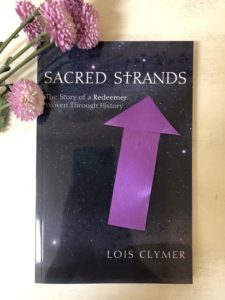What are the “Strands” in Sacred Strands?

People have asked what the “Strands” represent in my book, Sacred Strands, The Story of a Redeemer Woven Through History. The “strands” are pieces of information such as stories or customs which show that ancient people had an awareness of a coming redeemer.
We find ancient people such as Job, who lived around 2000 BC, the time of Abraham, making this statement, “And as for me, I know that my Redeemer lives, and at the last He will take his stand on the earth. Even after my skin is destroyed, yet from my flesh I shall see God; whom I myself shall behold, and whom my eyes shall see and not another. My heart faints within me “Job 19:25-27.
We also find in many places the symbolism of Genesis 3:15, which theologians have called the Protoevangelium (First Gospel). As God pronounced punishment for Adam’s sin, he immediately gives man a glimpse into his plan to redeem man, to restore for him a way to life. God promised that the seed of the woman would bruise the head of the serpent (Satan) but be bruised in the heel. This is very symbolic language, as is most prophecy, and is difficult to understand until it happens.
However, this symbolism makes it easy to spot when we find it in the constellations and in myths of the ancient religions. These myths often appear to flow from the constellation. The myths incorporate the idea of a god-man who would struggle with a serpent, representing evil.
Here are some examples of the symbolism of Genesis 3:15 in the constellations. The constellation Hercules is pictured with one foot on top of Draco and with the other raised as if hurt. Ophiuchus (the Serpent-Holder) is struggling with a serpent, while stepping on the head of the scorpion with the other heel at the stinger tail of the scorpion. Virgo, who has always been known as the virgin, holds in her hand a seed of wheat, located at the spot of the very bright star Spica. Spica means seed in Latin.
Other strands include customs such as sacrifice of animals among most ancient peoples. Animal sacrifices foreshadowed the dying of Jesus Christ, for the atonement of sins.
The ancient reverence which people have always held in regard to the myths of the constellations suggests that they believed they were telling a divine message. Skeptics who wrote that Christianity copied from the pagan myths were, in reality, seeing bits of truth which have flowed from the beginning of history.
Did this redeemer who was promised actually come? The Biblical gospels give us proof from history while the Shroud of Turin (the burial cloth of Jesus Christ) gives us proof from science. I call the Shroud a modern day miracle to show us that Jesus really did rise from the dead as he predicted. His resurrection gives us hope that we will sometime rise. As he said, “I am the resurrection and the life; he who believes in Me will live even if he dies” John 11:25.
You can purchase Sacred Strands, the Story of a Redeemer Woven Through History here.
0 Comments